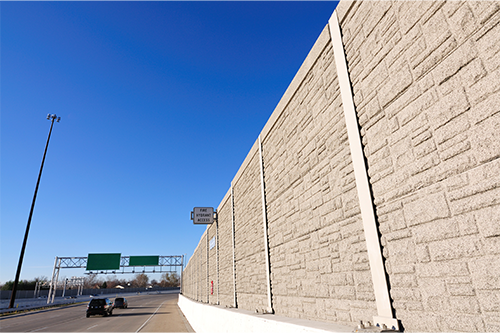While cruising down the highway, chances are you’ve come across concrete barriers flanking the roadway. These structures serve as noise barriers to shield nearby residential areas from traffic noise.
Understanding the importance of noise abatement in federally funded transportation projects, particularly in states like Florida with substantial growth, involves thorough evaluation during the preliminary planning stage.
Our goal at DRMP is to ensure stakeholders, including homeowners, schools, churches, and playgrounds, are not negatively impacted by increased traffic and expanded roadway capacity. By incorporating design, land use, and traffic considerations, we assess noise levels against federal criteria and implement abatement measures as needed throughout a project.

Since recently joining DRMP as the firm’s Transportation Noise Group Leader, I am excited for the opportunities of our noise analysis services expanding into the firm’s key markets and new service areas.
For more than two decades, I have dedicated my career to providing noise and air-quality analysis with a specialized focus on transportation, aviation, and rail modes in more than 20 states and internationally. My goal is to explore new markets in which DRMP can establish a presence and extend its PD&E/NEPA services to new and existing clients.
My role at DRMP focuses on advancing Project Development and Environment (PD&E) and National Environmental Policy Act (NEPA) services across the Southeastern United States through our noise analysis specialty. Our commitment to excellence, strategic partnerships, and the expansion of specialized noise services positions DRMP at the forefront of delivering comprehensive solutions in PD&E/NEPA services.
Noise Abatement
All federally funded transportation and improvement projects require a PD&E/NEPA study to meet the requirements of the National Environmental Policy Act, enacted in 1970. NEPA requires federal and state agencies to evaluate a project’s environmental impacts and disclose these effects to the public before making any design decisions.
A PD&E study is the Florida Department of Transportation’s (FDOT) procedure for complying with NEPA. Assessing noise impacts is an important component of environmental studies for transportation projects.
During a project’s preliminary planning stage, our experts evaluate the need for a noise barrier or wall based on predefined state criteria. If noise abatement is deemed necessary, we determine the specifics of the required barrier, including length and height. Throughout the project’s life cycle, noise analysis may be revisited multiple times, ensuring that any project alterations or developments are consistently evaluated for their implications.

Florida presents a multitude of opportunities for engaging in noise studies on various projects due to its significant growth and surge in transportation projects. FDOT receives numerous noise complaints, particularly from residents and business owners in bustling South Florida and supports the construction of noise abatement barriers, a perspective not universally embraced by all states.
While DRMP is focusing its efforts mostly on highways, the firm also provides noise and air-quality services for aviation. We have been asked to team with Barge Design Solutions to perform a review and re-evaluation of the air-quality analysis for an airport in Florida’s panhandle.
As we actively pursue new opportunities and markets, we remain dedicated to mitigating the impact of transportation projects on communities and reinforcing our reputation as a leader in delivering sustainable infrastructure solutions.
Robyn Hartz serves as the Transportation Noise Group Leader for DRMP’s Transportation Market Sector.















